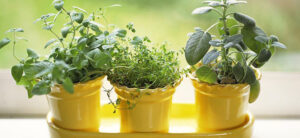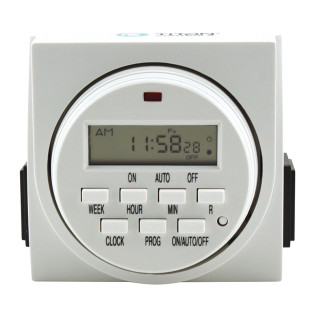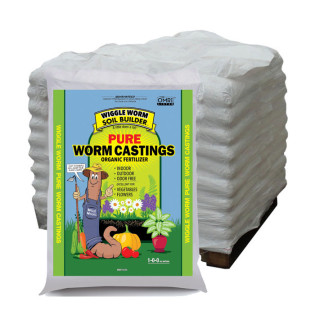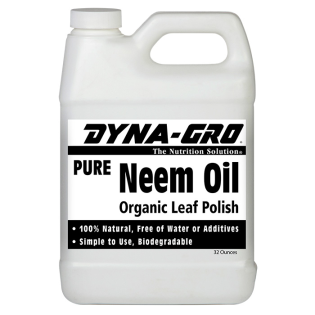
If you want to become a self-sustaining chef and add flavor and spice to your favorite dishes, learning how to grow oregano plants is a great idea.
There are a few different herbs and spices you'll want in your arsenal, and this is one of the most essential.
It's a staple in a wide assortment of recipes, and best yet - it's super easy to grow from the comfort of your own home!
An herb with a robust scent and a tantalizing flavor, you can easily learn how to grow oregano indoors and outdoors - depending on how much you want!
We'll teach you everything you need to know about how to start producing sprouts of your own so you can pluck a few leaves here and there and bring them straight to the kitchen for preparing a meal.
We've got a lot to cover, so let's start with some basic information on this plant.
What Is Oregano?

A perennial herb, oregano can be grown in a container, a raised bed, a hydroponic environment, or even as a groundcover.
It produces lovely white or purple flowers and has a taste that is similar to that of thyme.
But the exact flavor is very unique to oregano, making this an irreplaceable herb in the kitchen. It has a powerful zest that makes it perfect for use in Italian dishes.
Is Oregano Easy To Grow?
Oregano is easy to grow both indoors and outdoors - making it great for beginners, even if you've never tried cultivating a plant entirely on your own before.
Native to hot and dry regions, it’s the perfect herb to try to cultivate if you live in a drought-prone environment (or perhaps are a little lackadaisical when it comes to remembering to water your plants).
It's a very hardy plant, overwintering even in places that experience harsh winter weather.
How Long Does Oregano Take To Grow?
Oregano is a slow-growing herb that takes about 90 days to become fully established.
Seeds generally take around two to three weeks to germinate (longer than most vegetable seeds, but about average when compared to other perennial herbs).
Does Oregano Come Back Every Year?
Although this herb takes some time to set sturdy roots, it’s well worth the wait.
Oregano, like other common herbs such as chives and thyme, is perennial in most parts of the country. This means it will come back year after year - until you get sick of cutting it, that is!
What Are The Best Oregano Varieties To Grow?
There are many oregano varieties you can grow, but the most common is Origanum vulgare. If you buy oregano in the grocery store to cook with, this is likely the cultivar you are most familiar with.

The best known subvariety of this species is Greek oregano, or O. vulgare var. Hirtum. It’s frequently referred to as Italian oregano, or true oregano, and is usually used on pizza and in sauces.
Other types to consider growing include Golden oregano and marjoram. Lots of people don’t realize this, but marjoram, O. majorana, is a type of oregano that has a flavor similar to that of Greek oregano but much less spicy.
This makes it suitable for recipes that require a milder flavor, like poultry and seafood.
If you're unsure which variety you'll like best, consider growing a few different ones and mark them accordingly and try them out yourself!
What Do You Need To Grow Oregano Plants?
You need very little to start growing this aromatic perennial herb. And because this herb grows well hydroponically, you'll need to choose whether you want to grow in soil or hydro. You'll also need to determine where you want to grow:
At the very least, you should start with well-draining, well-aerated garden soil.
Because it does not require a lot of water, particularly after it has been established, it’s very easy for the roots to become waterlogged. This is why learning how to properly water plants is so important!
You can also grow this herb in a hydroponic environment - in which case you wouldn't use soil, but rather, coco coir or some other hydroponic grow media. Check out our selection of complete hydroponic systems, or read our review of the best hydroponic systems of the year for more information!
The plants should be spaced about 8 to 10 inches apart and spread to about 18 inches, so you should shoot for one plant per pot.
Make sure the pots have adequate drainage holes drilled into the bottom - clay pots are a no-no, as this will lead to root rot.
How Many Hours Of Sun Does Oregano Need?
This is one herb that really loves the sun, so make sure you can place your containers in full, strong sunlight.
The more sunlight your plants receive, the more pronounced the flavors will be. This is why many people choose to wait to plant until later in the season, so the weather is assuredly warm.
How To Grow Oregano Indoors - What Else Is Needed?
If you are planning to grow a small crop of oregano indoors, you'll need some additional supplies - depending on the quantity you want to cultivate.
You can place a small pot on your windowsill as long as it gets ample sunlight - but most of us do not have a window in our abode that would suffice in terms of sunlight.

In this case, you'll need some supplemental grow lighting - because oregano is a smaller plant, you don't need to overdo it here. You can get away with a small LED grow light or fluorescent grow light.
Of course, you'll want a timer too. This will allow you to set the lighting intervals and automate the turning on/off of the fixture.
You may consider just starting an indoor garden so you can cultivate some other plants you commonly use in the kitchen. In this case, you'll be best off investing in a grow tent kit.
These contain everything you'd ever need - a grow tent to contain the mess of your grow and help maintain the ideal temperatures, prevent light leaks, pests/diseases, etc.
They also contain an exhaust system to pull out old, hot, stale air and passively bring in fresh air through the intake at the bottom. If you want a recommendation, check out our top grow tent packages of the year.
Now, let's get into what you came here to learn about - how to grow oregano plants indoors or outdoors!
How To Grow Oregano Plants And Continually Harvest Them
Ready to start growing your own herbs? Here are some tips on how to grow this perennial herb so you can harvest it for many years.
Growing great oregano plants starts with planning things out, so let's help you choose how you're going to get started.
What Is The Best Way To Grow Oregano?
When you’re getting ready to grow your own herbs, it’s almost always easiest to start your seeds indoors.
This is true regardless of whether you plan to keep your seedlings in a container for their entire life or transplant them outdoors later.
If you do plan on transplanting, wait until after the final frost. Oregano can overwinter but does need several months of warm weather to get itself established.
Plant your seeds (cuttings can also be used) in well-draining soil. Keep the soil warm, around 70 degrees, until the seedlings emerge.
It normally takes around three weeks for this to occur. Once the plants are a few inches tall, thin them so that they are about eight inches apart or transplant them into the garden or fresh individual pots.
Oregano Garden Care
Growing oregano is remarkably easy - this is an herb that requires very little hands-on care to take it from seed to your dinner plate!
You will need to water it thoroughly but infrequently, usually only when the soil is completely dry to the touch - stick a knuckle in the soil to see.
The ideal soil pH for this plant is around 5 to 8. Oregano doesn't have high nutritional needs like some other plants, as it's just a small herb. If you use a potting soil that'd been pre-amended with nutrients, you will likely be good for seed to harvest on the nutrient front.
However, a bit of compost tea or dry amendments sprinkled in throughout the growing cycle can go a long way in producing bushy, productive oregano plants.
Oregano Pest & Disease Prevention
Like many herbs, oregano is resistant to most kinds of pests and diseases. In fact, it’s often grown as a companion plant to keep bugs away from other plants! All the more reason to learn how to grow oregano plants indoors and outdoors.

Just keep an eye out for the traditional garden annoyances, like aphids and leafminers. You can spray with neem oil (or even, sometimes, just a simple blast of the hose!) to get these pests off your plants.
When growing this herb indoors, watch out for spider mites. These, too, can be treated with neem oil. In some cases, though, you may need a more powerful insecticide to fully eradicate the infestation. Be sure it's OMRI listed and follow directions carefully, using these products at the right time only!
There are very few diseases to watch out for besides mint rust. Mint rust, or Puccinia menthae, is a fungal disease that causes yellow or brown pustules to form on the bellies of the plant’s leaves.
It can cause large amounts of leaves to wither up and die. You can prevent mint rust by watering sparingly and minding spacing guidelines when you plant and thin your plants.
If an infestation does set in, a fungicide is usually necessary (or you might have to remove affected plants in very severe cases).
Should I Let My Oregano Flower?
Flowers are a sign that your herb has matured. While you can let your plants flower at the end of the season, it is recommended that you harvest your leaves before the plant flowers.
They’ll taste fresher and less bitter if you do this. If you notice flowers, pinch them off to keep the plant growing in a bushy fashion and to stop it from going to seed before you’re ready for it to do so.
Can I Harvest Oregano After It Flowers?
Again, the best time to harvest this herb is before it flowers - just as the buds are starting to form, in fact.
You can harvest after the plant has flowered, but the leaves won’t taste quite as intense. Use this as a learning curve, and take note of when you started to notice flowers so you can harvest earlier next time!
Or better yet, read this next selection below to learn how to grow oregano so that it can continually be plucked from - without flowering!
How Do You Pick Oregano So It Keeps Growing?
Once your plants grow to about four inches tall, you should either pinch or trim them so that they grow in a dense, bushy fashion (this will prevent leggy growth that leads to poor leaf production).
Another tip is to thin your plants each spring. You can divide them or thin them, removing plants that are more than three years old.

Since oregano is self-seeding, you don’t have to replant in order to get new plants.
Otherwise, you can simply harvest the leaves as you need them in your food.
They can be frozen or dehydrated to use during the rest of the year, too. Just remember to follow proper harvest storage practices!
Final Thoughts On How To Grow Oregano Plants
Oregano has a ton of uses in the kitchen - and even in the medicine cabinet! This is an herb that’s prized for its versatility and use in old-fashioned herbal remedies, like those for treating an upset stomach or anxiety.
If you’re ready to start growing this tantalizing herb, pick up your growing supplies today.
Oregano is a useful herb that’s great to have in the kitchen - especially when the leaves are plucked fresh from your own homegrown plants!











































